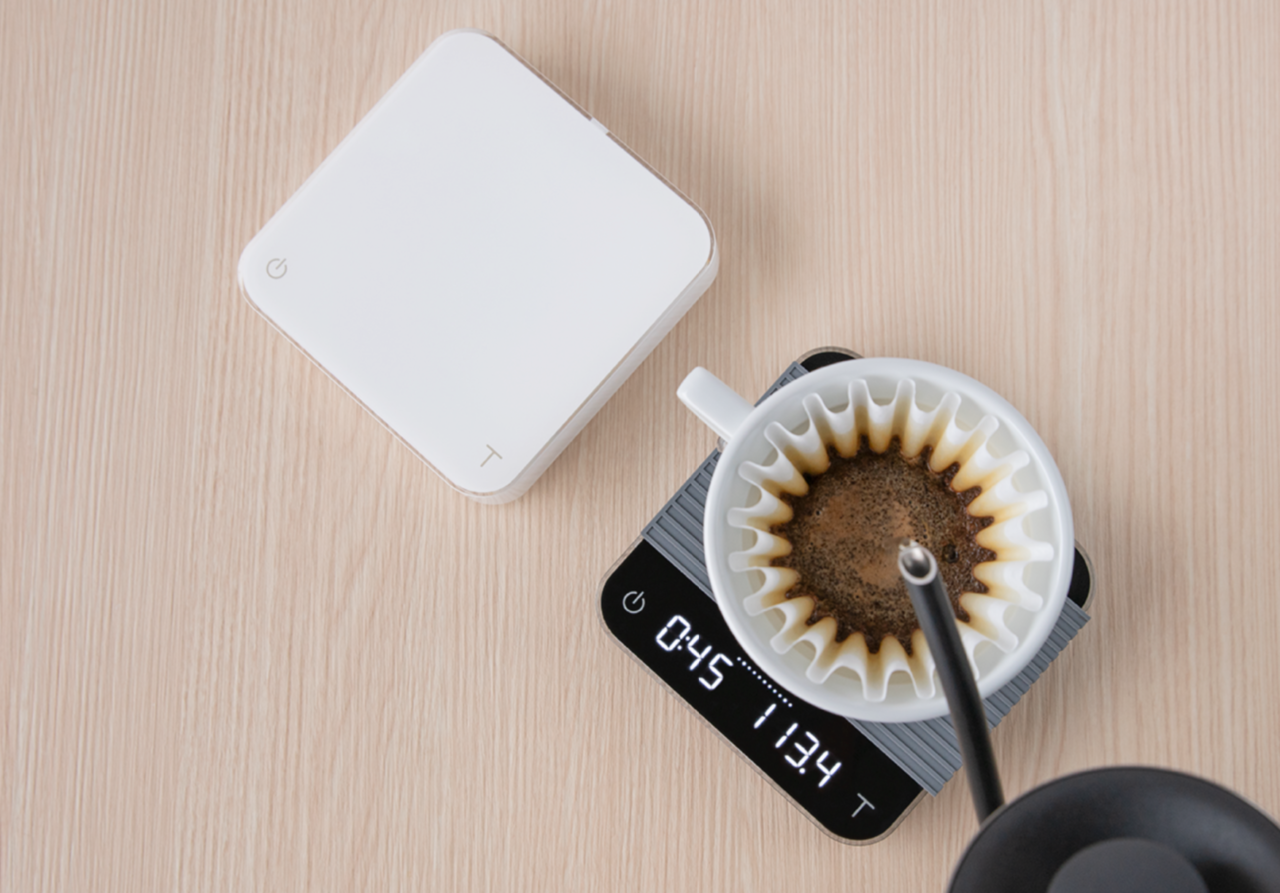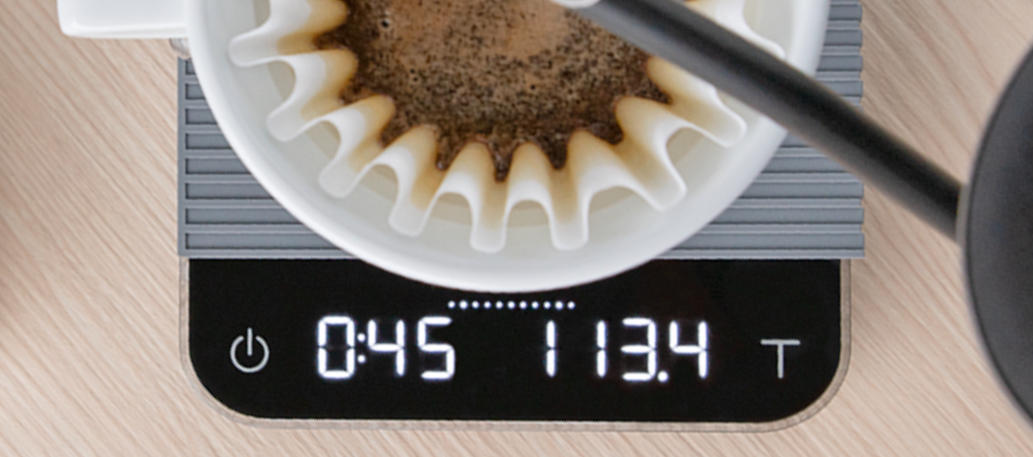The Acaia Pearl Scale, the one that started it all for high end, coffee specific scales with a Kickstarter campaign almost 8 years ago, is getting its second major update and overhaul, and most definitely the scale’s biggest update since it’s initial introduction. You may have noticed the Pearl model listed as out of stock for a while now, and this is the reason why.
The new scale, which Acaia is referring to as the Pearl 2021, has a broad range of improvements and enhancements. While the scale may look the same as the Pearl has always looked since its initial launch, it is different in may ways on the external side, and even more different internally. Let’s get into some of the scale’s improvements.

Pearl 2021: Very New Inside
The inside of the Acaia Pearl 2021 scale — the guts as it were — is very different from the previous Pearl models, and everything is an improvement. The industrial calibre scale mechanisms themselves are new and very much improved in terms of both accuracy and response time. I never found the old Pearl and Lunar scales to be particularly slow; their boot up time was a second or two, but operation of the scales provided lightning quick response times. Well, the new scale is faster in start up and operation.
The scale now charges via USB-C and features a new lithium ion battery that has a rather crazy 30-40 hour operation time between charges.
The display itself gets a big upgrade too. It is markedly brighter than the older Acaia Pearl Models.
On the old Pearl, you kind of had to guess at what modes the scale was in; The Pearl 2021 model has dedicated graphical indicators for modes: pour over gets a rain drop, and portafilter mode gets a square box.
The display light fades and glows when switching between modes, or turning off. It’s actually a nice aesthetic improvement.
New and Improved Modes
Through software updates, the older Pearl models introduced new brewing modes and other improvements, including timer enhancements, auto start and auto tare modes, a beverage mode and espresso modes.
The new Pearl 2021 makes it a lot easier to access and make use of these modes right on the scale, no app required, and Acaia even adds a few new ones. From a usability standpoint, the addition of the graphical indicators for pour over mode and portafilter mode are helpful.
The Beverage Mode sees a very marked improvement. At first glance you would think it is the same as the Beverage mode provided with the Pearl V2 software upgrade, but the Pearl 2021 model has one more trick up its sleeve. On top progressing through the weight and addition of items to the scale (carafe, filter, filter paper, coffee, then water) with automated prompts on screen, when the brew is completed, the display cycles through information about the drink build. On the V2 Pearl, you got total time and total water used, and the beverage weight. On this new Pearl 2021 model, a third display is presented: your brew ratio is calculated and displayed.
The Acaia Pearl 2021 now has a visual, real time flow rate indicator! It is a series of lit dots in a row, above the number readout area of the scale’s display, and it is executed brilliantly. The middle 9 dots represent from 0 to 2.5g/second flow rate and spread out left and right to give a really good indication of how fast or slow you’re adding water to your brew. The 2.5g indicator lights are brighter than the others, to provide you with a visual cue for a pouring rate used by most pros and pour over coffee champions. The next pair of brighter lights are at the 6.5g/second flow rate indicators, which is a safe maximum pouring speed if you want a faster brew.

The design and implementation of the live flow rate indicator helps you control and ease your flow of water to a bed of coffee so it’s very consistent and even. Acaia executed this brilliantly and I certainly appreciated it’s addition to the scale’s UI.
About the author
This article is inspired by the idea at CoffeeGeek, a community website, with the purpose is to inform, educate and entertain coffee and espresso lovers. Coffee Geek is one of the oldest specialty coffee websites, and a lot of baristas, coffee champions and roasters started their career with questions on the Coffee Geek forums.


You must be logged in to post a comment.